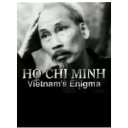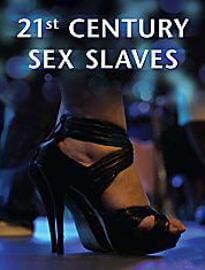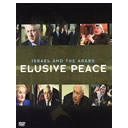Thailand: A Year of Living Dangerously
After a violent end to the recent protests, Thailand, a country of over 60 million people, was facing its worst political crisis in decades.
For two months anti-government protesters, the so-called red shirts, had taken over key parts of downtown Bangkok, demanding for Abhisit Vejjajiva, the country's current prime minister, to step down, dissolve parliament, and call fresh elections.
The sit-ins had paralyzed Bangkok and threatened to rock the Thai economy, which is the second largest in Southeast Asia.
The red shirts have been calling for Abhisit's resignation since he came to power in 2009 – after Thaksin Shinawatra, the country's populist prime minister, was ousted in a bloodless military coup in 2006.




truly sad, it s such a beautiful country.
i went down there with my friend that day, it was completely mental, when the chaos started we jumped back behind the barriers while all the tv crews headed the other way, we were essentially trapped, they had snipers on the roofs taking shots at anybody they wanted to. The army went all out on this 1, i will never forget that day... bloody awesome
Read a book entitled, "The King Never Smiles" and you'll see how much he is behind military coups. A very interesting book that opened my eyes to the TRUE Thailand and how oppressed Thais really are. My partner and I live safely and freely in NZ.
Was in Thailand just over a year ago. This documentary so much better helps me understand and appreciate the people of that wonderful place.
Prime minister obviously educated in the west and the lady from the green movement US educated. I don't see how the average ,Joe in Thailand, has any hope of a better life. How do these elites can manipulate millions but having said that look at Bush and co. in US of A?
I lived and worked right in the middle of the "Red Zone" during the two months of protest. What this documentary omits is the widespread belief that Taksin financed the Red Shirts. I saw with my own eyes the daily lines of Red Shirts receiving cash payments. With - my - own - eyes. The entire effort was incredibly well organized and financed. Despite the protesters living in the streets and the protests attempting to look as if they were spontaneous and grass-roots, there were high-tech internet connections, complete sanitary facilities including showers and daily garbage removal, massive quantities of food, shirts, buttons, pins, banners - depicting Taksin, of course - and those mini banks handing out cash to anyone who would sign their petition - all organized and efficiently managed like a smooth corporation. This did not come from the protesters themselves, who looked confused and as if they had just stepped off the farm (no insult intended, for I totally respect both their demands and their livelihood).
The documentary also omits the violence in the months leading up to the main protests, in which "Men in Black", wearing ski masks, infiltrated the crowds and were caught on video randomly shooting people with assault rifles. The widespread belief was that they were hired by the Red Shirt organizers. Those organizers came across as crude populists in their public speeches, and their language often seemed to incite violence. If I recall, many of them were easily linked to Taksin.
This whole story is much, much more complex than the documentary implies, and it is not complete without an in-depth examination of Taksin's potential role...and his continuing role in Thai politics, including the election of his sister as prime minister. No one denies that Taksin remains the single most important player in Thai politics to this day, despite his exile. (Oh, and Taksin's war against small-time drug dealers in which something like 2,000 young men in villages were murdered in cold blood without benefit of trial? That would make its own interesting documentary.)
shin never caught me! on another note, i met shin's niece ages ago, through a friend, although she couldn't of told me herself because she was high off E and weed at the time, it was mid afternoon on sunday.
Humm, why did it take the narrator of this story about 25 minutes to
tell us what the controversy is about? Even the ex-prime-minister
understand the issues enough to side with the Red Shirts. Basically, the
Red Shirts are a grass roots group of Thai citizens who are clearly
being exploited and needed an equitable part in the economy. Nothing
new. So what we have is a country that needs to pay more to the workers
and stop siphoning off the money to the rich. The yellow shits, shirts I
mean, are English speaking well spoken middle class trying to retain
their status in an inequitable society. This reminds me of the French
Revolution. Basically, it took a lot of courage and tenacity for the red
shirts to fight back. I think there is obviously a problem between the
rich and the poor. Nothing new and something the Thai govt. is obviously
not taking seriously or the Red Shirts wouldn't need to resort to
extremes. When will elite govts. learn that they must make sure that the
workers are paid their fair share if they don't want an uprising. Those
who don't know their history are doomed to repeat it....
I'm an Australian living in Thailand and without watching this documentary, just by reading the description it sounds complete wrong. Like the person who made it has never even been here. I will watch and comment again.
Seems to me like a conspiracy of t-shirt manufacturers trying shift their excess yellow, pink and red stock...
On a serious note this is actually a sad situation, I find it ironic that the poorest portion of the population use one of the country's wealthiest men as their figurehead... Maybe he had the cash to propagandise their movement for his own political purposes?^
I spent a week in Thailand. I purchased a book on the street by Hemingway, it was written in their lang. Of course I couldn't read it. I like Hemingway a lot and the fact that they liked him too induced me to purchase the book. I was in Nam. I'm sick of war I hate war so I thought I would talk about something else. Did you hear what they said, "The yellow shirts are fighting the red shirts?! I thought i was listening to Galovers travels there for a moment. They all eat rice, they all love their children and they all make love. So whats the problem here. Could we make the shirts half yellow and half red? I was talking to a gal from Thailand, a student here on visa, we were discussing Nam and she made the comment something to the effect, "Oh those people are always fighting".
The King's color is yellow but he was hospitalized a few years ago and after a few weeks came back to some sort of public life. Exiting the hospital he was wearing pink and the next day pink shirts were every where.
As for the queen, her color is blue. I'm still to find time to watch, I'll comment once it's done.
When you get the chance, please tell us what has transpired in Thailand since 2010.
After having watched it i would like to point out a few things as a "farang" in Thailand.
The reporter stated that the kings colour is pink. As far as i know it is yellow. Before this "riot/war" between ´yellows´ and ´reds´ , every monday (king born on a monday) most thais wore yellow shirts, and fridays (queen born on a friday) they wore pink. (Edit: I´m not entirely sure about the colours - connection to the day, but i´m quite sure the kings colour is yellow, and know for a fact that the "dressing code" prior to this was as stated above)
It´s a bit outdated, but mostly accurate and a decent watch. Doesn´t really go "deep" into the problems in Thailand. But if you´ve never been in Thailand before it can give you some good insight in thai(s) life and culture.
And now a couple of years after this madness i believe there are still many unanswered questions (cover-ups)?
My personal theory is that the burning of the big malls was insurance fraud. I don´t have any proof and i don´t want to be a hardcore conspiracy theorist about it.
But many things point in the direction that it was, and as the reporter/mayor states in the documentary, the "big guys" were insured and had a great opportunity to "upscale" their malls after burning them down and collect the insurance.
My score: 6.5/10 of the doc.
Thanks for all of your info!
Was there during the "ousting" of Thaksin, and were there during the riots in Lumpini Park (lived about a km from Lumpini at the time), and luckily have a friend who´s dad is a high ranking police officer wich helped us granted acces to the area the day after the military moved in to "crush" the "redshirts" when practically nobody except government people were allowed in (still blood on the ground that hadn´t been cleaned up yet and so on). And lived in Bangkok during the curfew the week(s) before. Haven´t watched yet, but looking forward to see it... (Edited for spelling)